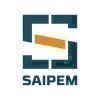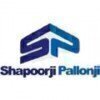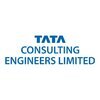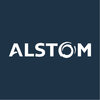Filter interviews by
Jacobs Engineering Group Sp3d Piping Designer Interview Questions and Answers
Jacobs Engineering Group Sp3d Piping Designer Interview Experiences
1 interview found
I applied via Approached by Company and was interviewed before Apr 2023. There were 2 interview rounds.
(1 Question)
- Q1. Past projects experience Pump Piping Column Piping Other piping basics Software related questions
(1 Question)
- Q1. Based on last salary and experience
Top trending discussions






Interview questions from similar companies

Piping Engineer Interview Questions & Answers
Megha Engineering & Infrastructuresposted on 28 Aug 2024
I applied via Referral and was interviewed in Feb 2024. There were 2 interview rounds.
(2 Questions)
- Q1. What is piping?
- Ans.
Piping refers to a system of pipes used to transport fluids or gases from one location to another.
Piping is used in various industries such as oil and gas, chemical, pharmaceutical, and construction.
It involves the design, fabrication, installation, and maintenance of pipes.
Pipes can be made of materials like steel, copper, PVC, or HDPE.
Piping systems can include fittings, valves, and other components to control the fl...
- Q2. What are the types of pipes used in piping?
- Ans.
Types of pipes used in piping include steel, copper, PVC, and HDPE.
Steel pipes: commonly used for high-pressure applications
Copper pipes: used for water supply lines
PVC pipes: lightweight and easy to install, commonly used for drainage systems
HDPE pipes: high-density polyethylene pipes used for underground gas and water lines
(1 Question)
- Q1. What is bevel angle of piping?
- Ans.
Bevel angle of piping refers to the angle formed between the prepared edge of the pipe and a plane perpendicular to the pipe axis.
Bevel angle is typically specified in degrees, such as 30° or 45°.
It is important for welding processes to ensure proper fit-up and joint strength.
Different bevel angles may be required based on the material being used and the welding procedure being employed.
Interview Preparation Tips

Piping Design Engineer Interview Questions & Answers
McDermott Internationalposted on 31 Jan 2024
(3 Questions)
- Q1. Explain the suction piping of pump?
- Ans.
Suction piping of a pump is the piping system that brings fluid into the pump from the source.
Suction piping is designed to ensure a smooth flow of fluid into the pump without any air pockets or cavitation.
The piping should be sized appropriately to prevent excessive pressure drop and maintain efficient pump operation.
Proper alignment and support of the piping is crucial to prevent stress on the pump and ensure longevi...
- Q2. Why we used eccentric reducer in suction line with flat side up/
- Ans.
Eccentric reducers are used in suction lines with flat side up to prevent air pockets and improve flow efficiency.
Eccentric reducers help in preventing air pockets from forming in the suction line
Having the flat side up ensures that any trapped air can easily escape
Improves flow efficiency by reducing turbulence and pressure drop
Commonly used in applications where smooth flow is critical, such as pump suction lines
- Q3. What is figure 8?
- Ans.
Figure 8 is a type of knot commonly used in piping design to secure two ropes or cables together.
Figure 8 knot is also known as a stopper knot due to its ability to prevent ropes from slipping through holes or other openings.
It is easy to tie and untie, making it a popular choice for various applications in piping design.
The figure 8 knot is often used in rock climbing, sailing, and rescue operations for its reliabilit
(2 Questions)
- Q1. Piping of control station
- Ans.
Control station piping is essential for regulating and monitoring the flow of fluids in a system.
Control station piping connects various components such as valves, instruments, and equipment to control the flow of fluids.
Proper design of control station piping ensures efficient operation and safety of the system.
Consider factors like pressure, temperature, and material compatibility when designing control station pipin...
- Q2. Suction piping of pump
- Ans.
Suction piping of pump is crucial for efficient operation and performance.
Suction piping should be designed to minimize friction losses and ensure proper flow to the pump.
Proper sizing and layout of suction piping is essential to prevent cavitation and maintain pump efficiency.
Consider factors such as pipe diameter, length, bends, and fittings when designing suction piping.
Use smooth bore pipes, avoid sharp bends, and ...

Piping Engineer Interview Questions & Answers
Worleyposted on 28 Jul 2024
(1 Question)
- Q1. Thickness calculation

I applied via LinkedIn and was interviewed in Apr 2023. There were 2 interview rounds.

(2 Questions)
- Q1. What type of Pressure Tests are conducted on valves?
- Ans.
Various pressure tests are conducted on valves including hydrostatic test, pneumatic test, and cryogenic test.
Hydrostatic test is conducted by filling the valve with water and pressurizing it to a specified pressure to check for leaks.
Pneumatic test involves using air or nitrogen to pressurize the valve and check for leaks or defects.
Cryogenic test is performed at low temperatures to ensure the valve can withstand extr...
- Q2. What are some of the most important safety considerations you make when designing piping systems?
- Ans.
Safety considerations in designing piping systems are crucial for preventing accidents and ensuring the integrity of the system.
Ensuring proper material selection to withstand the intended pressure and temperature conditions
Implementing proper support and restraint systems to prevent excessive stress and vibration
Incorporating adequate access points for maintenance and inspection
Following relevant codes and standards s...
Interview Preparation Tips

I applied via Referral and was interviewed before Feb 2023. There was 1 interview round.
(1 Question)
- Q1. Piping material Details and ASME codes

I applied via Company Website and was interviewed before Mar 2022. There were 2 interview rounds.

(3 Questions)
- Q1. Expansion stress formula
- Ans.
Expansion stress formula calculates the stress caused by thermal expansion or contraction.
Expansion stress formula is given by: ΔL/L = αΔT, where ΔL is the change in length, L is the original length, α is the coefficient of thermal expansion, and ΔT is the change in temperature.
The formula can be used to calculate the stress caused by thermal expansion or contraction in piping systems.
The formula assumes that the mater...
- Q2. IBR LINES details.pressure ratings etc
- Q3. Sustain stress formula
- Ans.
Sustain stress formula calculates the maximum allowable stress for a given material under sustained loading.
Sustain stress formula is used in piping stress analysis to determine the maximum allowable stress for a given material under sustained loading.
The formula takes into account the material's yield strength, ultimate tensile strength, and safety factor.
Sustain stress formula is expressed as S = (Sy/FS) + (Su/FS) * ...
Interview Preparation Tips

Interview Questionnaire
1 Question
- Q1. MOC, calculations, standard, VMS, PMS,

Piping Engineer Interview Questions & Answers
Shapoorji Pallonji Groupposted on 12 Jul 2021
I applied via Referral and was interviewed before Jul 2020. There were 4 interview rounds.
Interview Questionnaire
3 Questions
- Q1. Just about piping and safety related
- Q2. P&ID drawing related
- Q3. Hydrotest related
Interview Preparation Tips

Piping Engineer Interview Questions & Answers
Megha Engineering & Infrastructuresposted on 22 Feb 2024
I applied via Company Website and was interviewed in Aug 2023. There was 1 interview round.
(6 Questions)
- Q1. All related Piping and my experience related questions ASME standards codes
- Q2. What's Pinging, pipeline ASME CODE
- Ans.
Pinging in pipeline ASME CODE refers to the process of using ultrasonic testing to detect defects or anomalies in the pipeline.
Pinging involves sending ultrasonic waves through the pipeline to detect any abnormalities in the material or welds.
This technique is commonly used in the inspection of pipelines to ensure they meet the standards set by the ASME CODE.
Pinging helps identify potential issues such as cracks, corro...
- Q3. What's the use of corrosion coupon and it's applications
- Ans.
Corrosion coupons are used to monitor the rate of corrosion in a system and to determine the effectiveness of corrosion inhibitors.
Corrosion coupons are small metal strips or discs that are inserted into a system to measure the rate of corrosion over time.
They are made of the same material as the system being monitored, allowing for accurate assessment of corrosion rates.
Corrosion coupons are typically retrieved period...
- Q4. P&ID and PFD difference and full form
- Ans.
P&ID stands for Piping and Instrumentation Diagram, while PFD stands for Process Flow Diagram. They are both used in engineering to represent processes and systems.
P&ID shows the piping of the process flow system, including the equipment and instrumentation used.
PFD shows the overall flow of the process, including major equipment and control loops.
P&ID includes more detailed information like pipe sizes, materials, and ...
- Q5. CAD related test on basis isometric drafting and ON PIPING GAD also
- Q6. Types of instruments and application
- Ans.
Types of instruments used in piping engineering and their applications
Pressure gauges - measure pressure in pipes to ensure safe operation
Flow meters - measure the flow rate of fluids in pipes for monitoring purposes
Temperature sensors - monitor the temperature of fluids in pipes to prevent overheating
Level indicators - indicate the level of fluids in tanks connected to pipes for control purposes
Control valves - regula...
Interview Preparation Tips
Skills evaluated in this interview
Jacobs Engineering Group Interview FAQs
Tell us how to improve this page.
Jacobs Engineering Group Interviews By Designations
- Jacobs Engineering Group Graduate Engineer Trainee (Get) Interview Questions
- Jacobs Engineering Group Piping Designer Interview Questions
- Jacobs Engineering Group Process Engineer Interview Questions
- Jacobs Engineering Group CAD Technician Interview Questions
- Jacobs Engineering Group Civil Engineer Interview Questions
- Jacobs Engineering Group Design Engineer Interview Questions
- Jacobs Engineering Group Field Engineer Interview Questions
- Jacobs Engineering Group Lead Engineer Interview Questions
- Show more
Interview Questions for Popular Designations
- Piping Engineer Interview Questions
- Piping Designer Interview Questions
- Piping Design Engineer Interview Questions
- Senior Piping Engineer Interview Questions
- Piping Stress Engineer Interview Questions
- Piping Supervisor Interview Questions
- Design Engineer Interview Questions
- Senior Piping Designer Interview Questions
- Show more
Jacobs Engineering Group Sp3d Piping Designer Interview Process
based on 3 interviews
Interview experience
Interview Questions from Similar Companies
Fast track your campus placements
Jacobs Engineering Group Sp3d Piping Designer Reviews and Ratings
based on 1 review
Rating in categories
|
Design Engineer
271
salaries
| ₹4.5 L/yr - ₹16.5 L/yr |
|
Senior Design Engineer
151
salaries
| ₹7.5 L/yr - ₹26 L/yr |
|
Piping Design Engineer
102
salaries
| ₹4.7 L/yr - ₹15 L/yr |
|
Piping Designer
97
salaries
| ₹3.7 L/yr - ₹15 L/yr |
|
Senior Engineer
71
salaries
| ₹9 L/yr - ₹21 L/yr |

AECOM

Bechtel

Fluor Corporation

Worley
- Home >
- Interviews >
- Jacobs Engineering Group Interview Questions >
- Jacobs Engineering Group Sp3d Piping Designer Interview Questions












